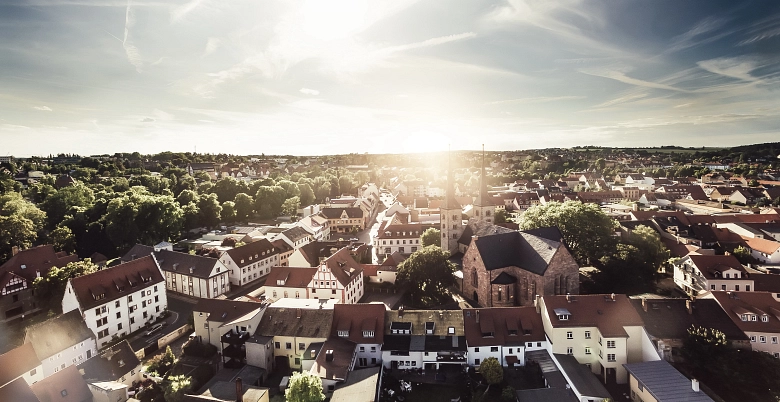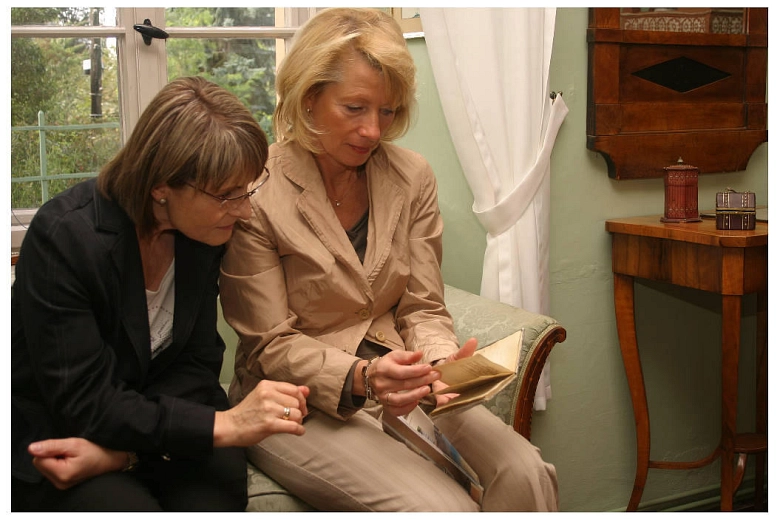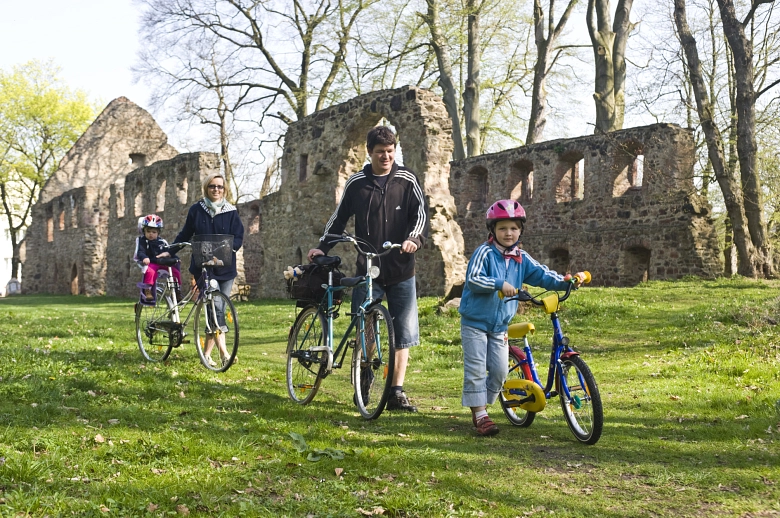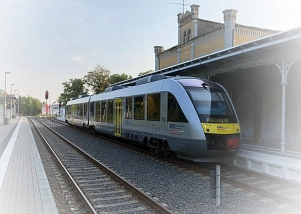Inhaltsbereich
GRIMMA - The Gem in the Leipzig Region
Grimma, affectionately known as the "Pearl of the Mulde River Valley", is one of the most beautiful places in the world, located right in the heart of Germany’s Free State of Saxony. Long-time residents of Saxony know that less than 20 kilometers southeast of Leipzig, there is a little paradise called Grimma where gentle hills and the breathtaking scenery of the Mulde River Valley warmly welcomes guests and residents alike. Whether you are only visiting or plan on residing in Grimma for a lifetime, life here is pleasant amidst cultural monuments and protected landscapes.
Probing into the 800-year-old history of Grimma, many important historical and cultural milestones can be discovered. For example, Grimma is the birthplace of Albrecht der Beherzte, an ancestor of the Saxon royal family. Furthermore, Katharina von Bora, the wife of the reformer Martin Luther, lived behind the mighty walls of Nimbschen nunnery until she made a spectacular escape with his help in 1523. Georg Joachim Göschen, the famous publisher of classical German literature including the works of Lessing, Goethe and Schiller, relocated his printing shop from Leipzig to Grimma in 1797 on the River Mulde, where his friend, Johann Gottfried Seume, joined him as a proof-reader. Göshen’s summer house in Grimma enjoyed frequent visits by German literary figures such as Friedrich Schiller and Christian Gottfried Körner. The house now stands as a museum where visitors from all over the world gather.
In recent times, Grimma has won the reputation of having the most beautiful old town centre in Central Germany. Grimma boasts 26 magnificent buildings from five stylistic periods, including the famous town hall with its prominent Renaissance gable. The town is protected by a well-preserved wall which is over 400 metres long and lined by delicate little houses, giving an outstanding view of the River Mulde and its romantic riverside. During excursions through the town, visitors will find historic points of interest such as the Frauenkirche and the Klosterkirche (monastery church), the feudal castle and the medieval Nimbschen nunnery, the Gymnasium St. Augustin School, as well as the floating water mill. The rooms of these cultural monuments house unique museums, galleries and exhibitions that are worth a visit. Moreover, the Denkmalschmiede Höfgen and the Kaditzsch Studio Gallery have become home to innovative sculptures, experimental art and modern art festivals that are sure to please all art lovers.
No tour of Grimma's old town would be complete without seeing the stunning riverbank of the Mulde and its 80 metre-long suspension bridge, the longest cable stay bridge in Saxony. The picturesque landscape of the River Mulde offers an extensive network of walking and cycling paths that lead to the Nimbschen nunnery ruins, Grimma Palace, Gattersburg castle, spacious estates with typical wall houses, mills and other exciting attractions.
Discover and experience the beauty of Grimma, the Pearl of the Mulde River Valley, by day or night. We look forward to having you!
Contact: Tourist Information Grimma
04668 Grimma, Markt 23
Tel.: +4934 37/ 98 58 285 E-Mail: stadtinformation@grimma.de
Tourist Tips:
Hand-on Museum
Göschenhaus Grimma and Seume Memorial offer a remarkable collection of exhibits once owned by the publisher and printer Georg Joachim Göschen and his prominent guests, which included the "travelling" poets Johann Gottfried Seume and Friedrich Schiller.
Convent Nimbschen and the "Cinderella of the Reformation"
Authentic sites associated with Luther´s life can be found in Saxony, especially in Grimma, where Luther preached on several occasions in the church of the Augustinian priory. Before Katharina von Bora became Luther´s wife, she was a nun in the Marienthron Convent in Nimbschen, about one kilometer south of Grimma. Luther´s reformation had penetrated the thick walls of the convents and Katharina came to realize the truth of what she termed the "uselessness of being imprisoned" in a convent. In 1523 she managed to flee in spectacular fashion to Wittenberg where she married Martin Luther two years later. Today the stone ruins convent, together with an exhibition displayed in the local Grimma museum still stand as silent witnesses to this romantic "Cinderella of the Reformation" story.
Cultural Events:
- May 1st: Lamb Market and Morris Dance Festival
- May: Air Ballooning Days
- June to September: Concert series in the monastery church
- July: Mulde Valley Triathlon
- September: International Meeting of Musicians (held at 4 year intervals - next: 2022)
- November: Martinimarkt, an arts and crafts market
- December: Grimmaer Hofweihnacht, a festive Christmas market




